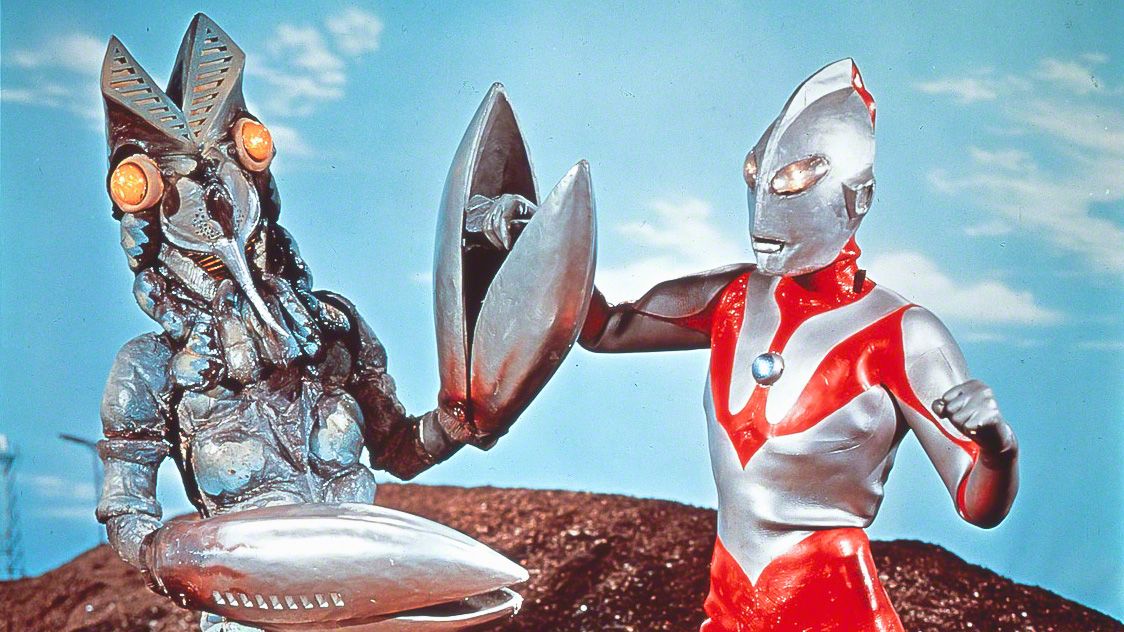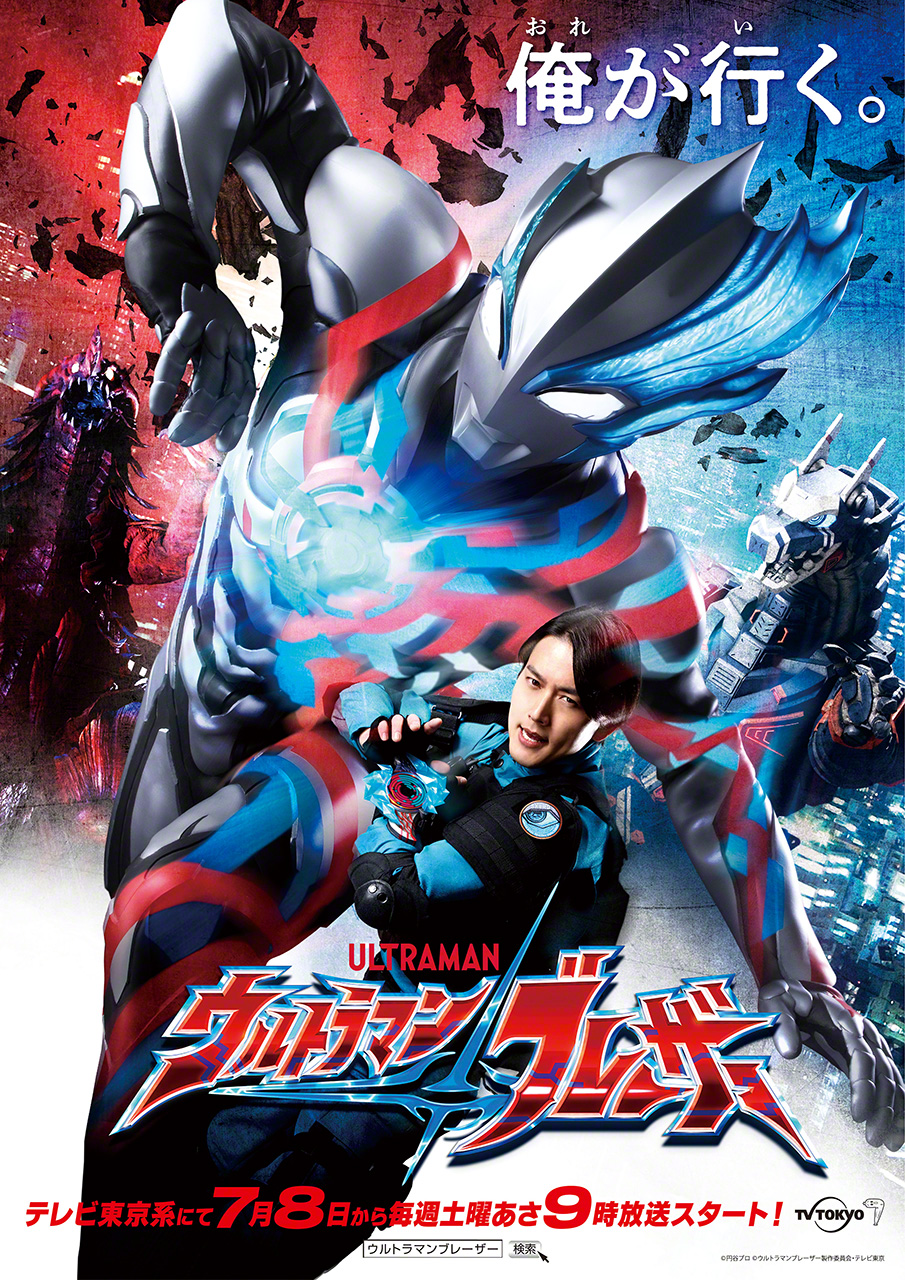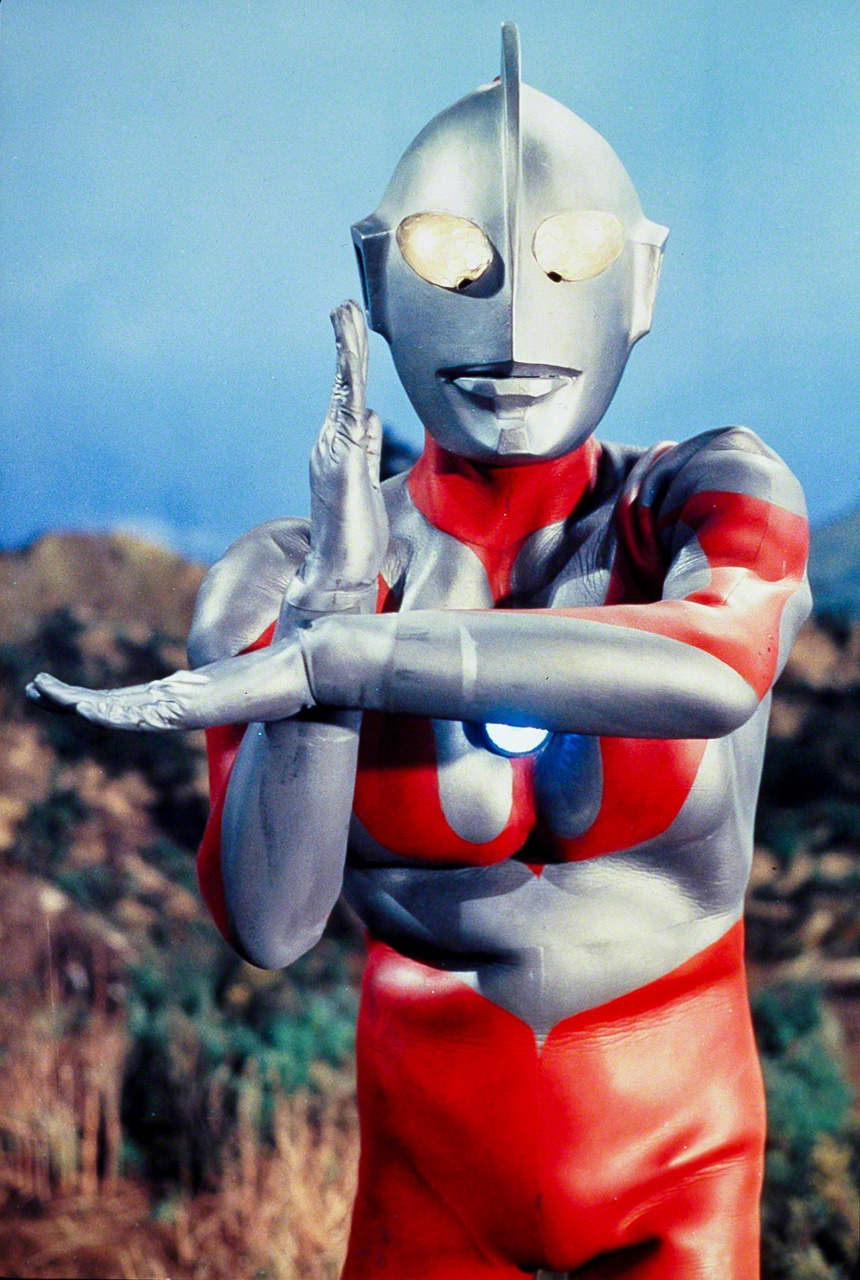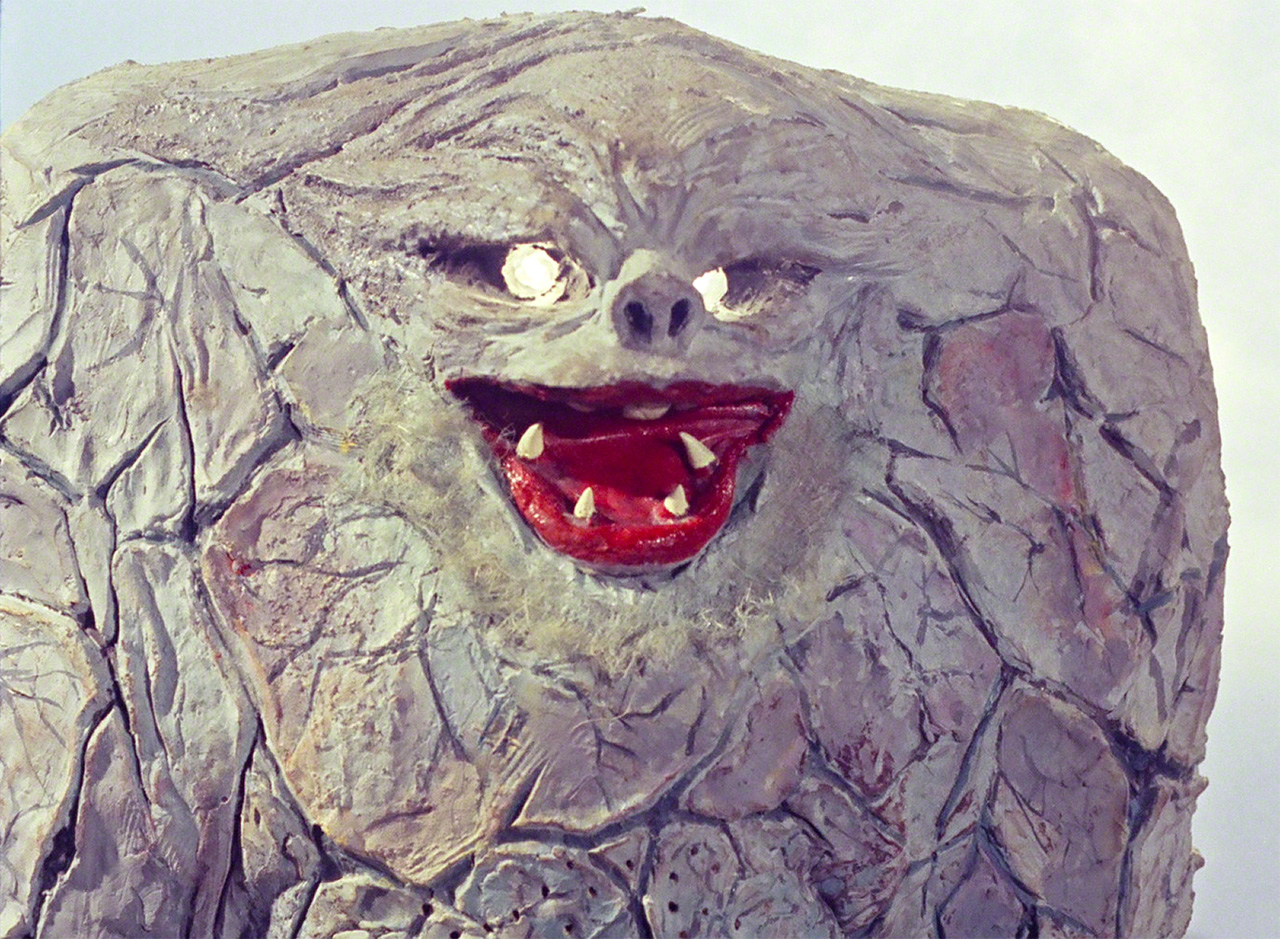
Ultraman: A Modern-Day Folk Hero from Japan
Culture Anime Society Lifestyle Entertainment- English
- 日本語
- 简体字
- 繁體字
- Français
- Español
- العربية
- Русский
The other day, as I walked towards the train station, I heard a boy singing behind me. And he was not singing just any old song―it was the theme to Ultraman Ace! Surprised, I turned to look and saw a young boy, perhaps a first or second grader, in the back seat of his mother’s bicycle. He must have caught the show streaming on the Internet. Ultraman Ace debuted in 1972, more than a half century ago. Anyone who’d caught it in its initial broadcast run would be old enough to be this kid’s grandparent now!
But perhaps I shouldn’t have been surprised, for Ultraman has continued in various incarnations to the present day. The New Generation Ultraman series is in its eleventh year, and the latest incarnation, Ultraman Blazar, debuts in July.

Ultraman Blazar is the latest incarnation of the New Generation Ultraman series. In addition to an English dubbed simultaneous release, localized versions will be streamed in China, Hong Kong, Taiwan, Thailand, and Indonesia. (© Ultraman Blazar Production Consortium/TV Tokyo)
More than 40 Ultraman series have come out over the last 60 years, making the character an icon in Japan and around the world. The theatrical release of the movie Shin Ultraman in 2022 proved another hit, earning more than ¥4 billion at the box office.

A shot from the 2022 film Shin Ultraman. Directed by Higuchi Shinji, it took a new approach to the hero, updating him for modern audiences. (© 2022 Shin Ultraman Film Partners)
When Kaijū Ruled Japan
The history of the Ultraman series extends back to 1966, when a show called Ultra Q debuted in January of that year. Ultra Q centered not on giant heroes but a group of normal people: one a pilot, another his copilot, and the third a female news photographer. Every episode played out along the same lines: a monster would appear or an inexplicable event would happen, and the trio would face it. Ultraman, which aired in July of 1966, was a successor to this show.

Ultra Q centered on mysterious phenomena, but quickly shifted to center on kaijū (giant monsters). (© Tsuburaya Production)

Ultraman firing his trademark Spacium Beam. The original series remains the biggest hit in the franchise. (© Tsuburaya Production)
Ultra Q and Ultraman delivered into Japanese living rooms a sci-fi spectacular of the sort that had long only been available in movie theaters. Children obsessed over the giant monsters that appeared in every episode, touching off a “kaijū boom” that swept Japan. Ultra Q and Ultraman were the creation of a studio called Tsuburaya Productions, but rivals quickly leapt into the fray. P-Pro released Ambassador Magma (aired abroad as Space Giants); Tōei produced Giant Robo (aired abroad as Johnny Sokko and His Flying Robot.) Film companies like Shōchiku and Nikkatsu released films such as Uchū Daikaijū Girara (The X From Outer Space) and Daikyojū Gappa (Gappa, the Triphibian Monster). For a while there, it really felt as though Japan had been invaded by kaijū.
Two additional shows with Ultra in their names aired thereafter: Captain Ultra and Ultraseven. But the boom came to a close in 1968. (In spite of its name, Captain Ultra was co-produced by TBS and Tōei and is not counted as part of the Ultra series.) Tsuburaya’s series often secured more than 30% viewership with its shows, making them far and away the biggest draws of the era.
Ultraman Booms, Again and Again
What is it about Ultraman that so appeals across the generations? The answer to that can be found in the enduring pull of kaijū culture and superhero series among children. To see kaijū like Godzilla, Radon, and Mothra, children needed to go to a movie theater, making them rare treats. But Ultra Q flipped this script. Anyone with a television could flip a switch and invite kaijū right into their living rooms, every week. This made the beasts a very familiar presence in children’s lives, which is precisely what triggered the kaijū boom.
The fad faded in 1968, and the Ultra series drew to a close with Ultraseven that year. For children had moved on to sports-related anime such as Star of the Giants and Tomorrow’s Joe (later aired abroad as Rocky Joe.) While there were no new live-action sci-fi heroes being produced, the earlier series did well in repeated reruns. Ultraman in particular enjoyed an 18% viewership. It was as though a volcano of kaijū had been bubbling under the surface, re-erupting to the delight of a new generation of fans.
In 1970, a series of five-minute shorts consisting of nothing but fighting scenes culled from Ultraman and Ultraseven aired under the name Ultra Fight. Derided by some critics as a money grab, it proved very popular among children; 195 episodes aired over the course of 1970 and 1971. That interest paved the way for a new series, Return of Ultraman, that would usher in a second kaijū boom.

Ultraman fights Twintail. (© Tsuburaya Production)
This was nothing short of miraculous. It was unheard of for a television series to spark another boom after its initial run. The success came as a surprise even to the show’s creators, who had not realized just how deeply Ultraman had entrenched himself as a character in children’s entertainment culture.
The Drama of a Living Hero
The biggest achievement of Ultraman was establishing the new idea of a supersizing hero. There were many earlier heroes in Japan, such as Gekkō Kamen (Moonlight Mask) and Yūsei Ōji (Planet Prince), but they were, like the American hero Superman that inspired them, human-sized. Neither did they transform (henshin in Japanese, now a well-established trope) as Ultraman did. Through trial and error, the creators of Ultraman stumbled on a new, and groundbreaking, formula.
A 28 year old writer named Kinjō Tetsuo was at the center of it all. He worked in the script planning department of Tsuburaya Productions, and was filled with passion for delivering exciting new shows to the television world. He had three aims for Ultraman: that it feature a superhero, introduce a new kaijū every episode, and be in full color.

Red King (at left) and Chandlar. (© Tsuburaya Production)

Alien Mefilas. (© Tsuburaya Production)
The show’s premise was simple. Every episode, a kaijū or alien would appear. A “Science Patrol” would try to deal with it, but inevitably get in trouble. Ultraman, to the rescue. As a show, Ultraman was designed for a younger audience than that of Ultra Q, so it was more action-packed. But the creators were interested in more than simple good-versus-evil narratives; they wanted a little “something extra” that would stick in the minds of young viewers. This is precisely why Ultraman made such an impact on kids and television history both.
The “something extra” can be seen from the very first episode, which was written by Kinjō together with his mentor, the screenwriter Sekizawa Shinichi. Ultraman, from Nebula M-78, some three million light-years from Earth, serves as a defender of peace in space. He arrives on Earth in hot pursuit of an evil monster named Bemular, but accidentally kills the Science Patrol member Hayata in the chase. He gives his life-force to the fallen pilot, and the two become one. This mysterious visitor from deep space can step over the boundary between life and death itself. In the final episode, titled “Farewell, Ultraman,” another intergalactic defender from M-78 named Zoffy arrives on Earth, and saves Ultraman by separating him from Hayata. Kinjō was born and raised in Okinawa, a place where the line between life and death was blurred during the war years. As he wrestled with his dual identities as an Okinawan and a Japanese, it seems Kinjō injected them into the drama he helped create.
In the second episode, titled “Shoot the Invader,” the concept of life plays an even bigger role. An alien named Baltan has arrived on Earth. It is one of a race of beings whose planet was destroyed by a mad scientist’s nuclear experiments. The survivors shrunk themselves down to microscopic size to voyage through the cosmos in search of a new home, in a parable of the dangers of science run amok. The episode was helmed by the director Iijima Toshihiro, who went on to become one of Japan’s most unique television and filmmakers.
Working together with the screenwriter Sasaki Mamoru, Jissōji Akio went on to direct a celebrated series of episodes, including “Terrifying Cosmic Rays,” “My Home is Earth,” “A Gift From the Sky,” and “The Monster Graveyard.” Jissōji’s dramatic cinematography complemented Sasaki’s stimulating stories, raising the bar of the series to the point where adults could enjoy it, too.

From Ultraman. Jamila, the astronaut turned kaijū who fell to Earth―and victim of a war in space. (© Tsuburaya Production)
Ultraman also benefitted from “something extra” in being a product of its era. Every work is affected by the times in which it was made, and Ultraman is no exception. If anything, the sense is even stronger than that of its contemporaries. The show debuted in the late 1960s, as science was progressing in leaps and bounds even as protests unfolded against the war in Vietnam. This was also a time of dramatic economic growth, an era in which Japanese were filled with hope for the future. Children, who naturally look ahead, saw in Ultraman a new kind of hero for progress. A hero who could overcome any physical or mental pain to face his enemies, showing us the kind of bravery that inspires throughout the ages.

The 2006 film Ultraman Mebius & Ultraman Brothers showcased the Ultra family. (© 2006 Ultraman Mebius & Ultraman Brothers Production Consortium)

The Ultraman New Generation Stars, which started airing in January of 2023, introduced the Ultraman clan to a new generation. (© Tsuburaya Production)
(Originally published in Japanese on May 31, 2023. Images courtesy Tsuburaya Production. Banner image: Alien Baltan (left) proved the most popular out of all the Ultra kaijū. © Tsuburaya Production.)
